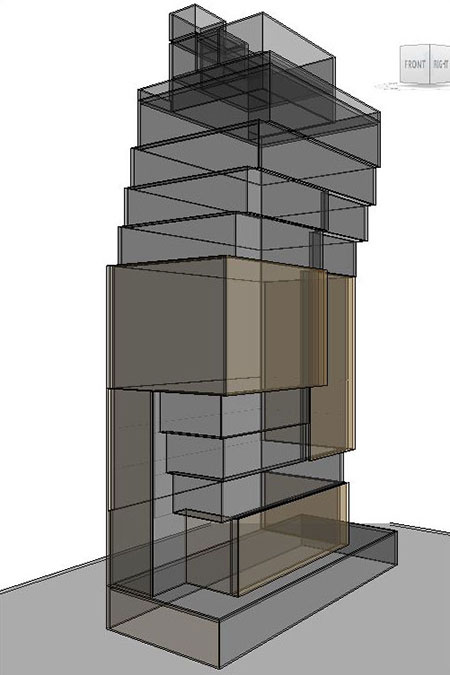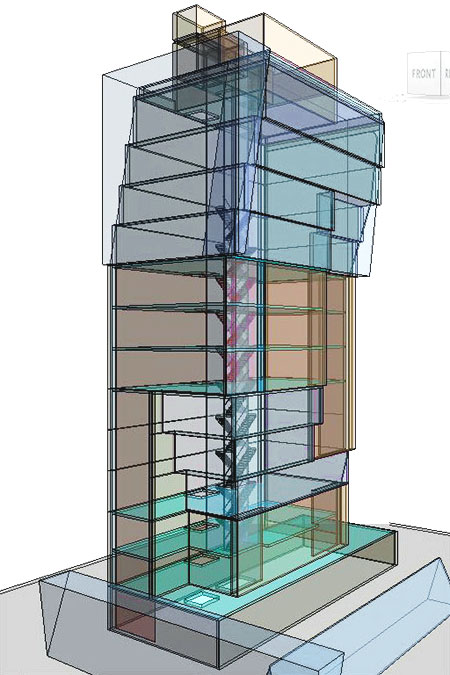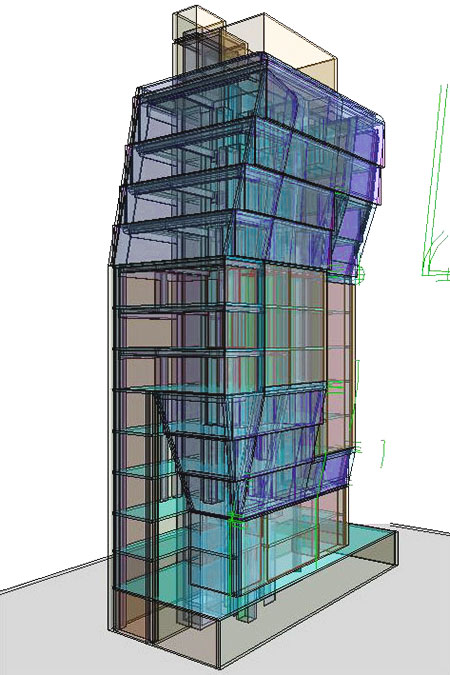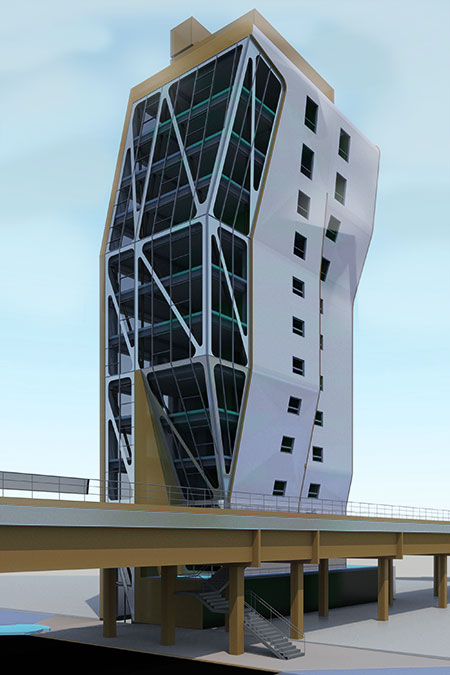Iterative study model of ‘HL23’, on Manhattan’s Highline, by Neil De Nari

Iterative study model of ‘HL23’,
on Manhattan’s Highline, by Neil De Nari

Streamlining the design and production process with Revit;
exploring its engaging and immersive communication tools
Streamlining the design and production
process with Revit; exploring its engaging
and immersive communication tools

Presented is the evolution from an initial boxy massing study to the distinctive non-rectilinear assemblage virtually impossible to create without 3D software. Multiple modeling techniques refine the surfaces for the application of cladding and the curtain walls, numerous iterations culminate in these interpretive renderings.
Imagined while at NVidia, engaged on their I-Ray development team, as the Revit Workflow Specialist. The project intended to promote the I-Ray renderer, successor to their Mental Ray renderer. Information was gathered online including Google Earth then extrapolated and refined. The exercise exemplifying the oft essential role of Architect as Draughtsman; emphasizing a keen appreciation for, and attention to details. The result – an elegantly executed representation of complex three dimensional forms and their explicit relationship(s) to one another. Lighting and materials are thoroughly scrutinized resulting in these interpretive renderings.

Presented is the evolution from an initial boxy massing study to the distinctive non-rectilinear assemblage virtually impossible to create without 3D software. Multiple modeling techniques refine the surfaces for the application of cladding and the curtain walls, numerous iterations culminate in these interpretive renderings.
Imagined while at NVidia, engaged on their I-Ray development team, as the Revit Workflow Specialist. The project intended to promote the I-Ray renderer, successor to their Mental Ray renderer. Information was gathered online including Google Earth then extrapolated and refined. The exercise exemplifying the oft essential role of Architect as Draughtsman; emphasizing a keen appreciation for, and attention to details. The result – an elegantly executed representation of complex three dimensional forms and their explicit relationship(s) to one another. Lighting and materials are thoroughly scrutinized resulting in these interpretive renderings.
Iterative study model of ‘HL23’, on Manhattan’s Highline, by Neil De Nari

Iterative study model of ‘HL23’,
on Manhattan’s Highline, by Neil De Nari

Streamlining the design and production process with Revit;
exploring its engaging and immersive communication tools
Streamlining the design and production
process with Revit; exploring its engaging
and immersive communication tools

Presented is the evolution from an initial boxy massing study to the distinctive non-rectilinear assemblage virtually impossible to create without 3D software. Multiple modeling techniques refine the surfaces for the application of cladding and the curtain walls, numerous iterations culminate in these interpretive renderings.
Imagined while at NVidia, engaged on their I-Ray development team, as the Revit Workflow Specialist. The project intended to promote the I-Ray renderer, successor to their Mental Ray renderer. Information was gathered online including Google Earth then extrapolated and refined. The exercise exemplifying the oft essential role of Architect as Draughtsman; emphasizing a keen appreciation for, and attention to details. The result – an elegantly executed representation of complex three dimensional forms and their explicit relationship(s) to one another. Lighting and materials are thoroughly scrutinized resulting in these interpretive renderings.

Presented is the evolution from an initial boxy massing study to the distinctive non-rectilinear assemblage virtually impossible to create without 3D software. Multiple modeling techniques refine the surfaces for the application of cladding and the curtain walls, numerous iterations culminate in these interpretive renderings.
Imagined while at NVidia, engaged on their I-Ray development team, as the Revit Workflow Specialist. The project intended to promote the I-Ray renderer, successor to their Mental Ray renderer. Information was gathered online including Google Earth then extrapolated and refined. The exercise exemplifying the oft essential role of Architect as Draughtsman; emphasizing a keen appreciation for, and attention to details. The result – an elegantly executed representation of complex three dimensional forms and their explicit relationship(s) to one another. Lighting and materials are thoroughly scrutinized resulting in these interpretive renderings.












